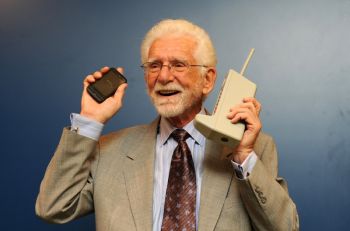Illinois Tech Professors’ Paper Challenging Classical View of Muscle Contraction Could Lead to New Cardiac Treatments
Professor Thomas Irving and Research Assistant Professor Weikang Ma, working with a team from the University of Washington, found that motor proteins have to be activated before muscles can contract.

CHICAGO—February 1, 2023—In a newly published paper, a team including two professors from Illinois Institute of Technology (Illinois Tech) have reported a new mechanism for muscle contraction that could play a significant role in developing treatments for inherited cardiac conditions.
Illinois Tech Research Assistant Professor Weikang Ma and Professor of Biology and Physics Thomas Irving, working in collaboration with Professor of Bioengineering Michael Regnier’s group at the University of Washington, challenged the conventional understanding of muscle contraction, which held that the relationship between the thin and thick filaments that comprise muscle tissue was relatively straightforward. Rather than myosin proteins that make up thick filaments automatically finding their way to thin filaments when their targets were activated, the researchers discovered that myosin motor proteins have to be turned on before they can generate force and contract the muscle.
By better understanding this relationship between the thick and thin filaments in regards to muscle contraction, genetic conditions that have gone untreated until now may eventually have medical remedies. The diseases can range from dilated cardiomyopathy—where the heart muscle is too weak and ultimately struggles to pump blood throughout the body—to hypertrophic cardiomyopathy, where the muscle works too hard and eventually becomes thickened, potentially reducing blood flow.
Part of what has allowed the team to make its case is the information that it gathered using a state-of-the-art technique called small-angle X-ray diffraction, a technique that Irving has been perfecting as part of the Biophysics Collaborative Access Team (BioCAT) in partnership with groups such as the National Institutes of Health and Argonne National Laboratory since the 1990s. This technique allows researchers to gather data in a way that Irving says is more accurate than other techniques currently being used.
“In electron microscopy, you can’t see motion, it’s a static measurement. You can’t do a time result,” says Irving. “In our case, we can take movies; we can do a physiological experiment and see these molecules moving in real physiological time. That’s what’s so special about it.”
Their paper, “Structural OFF/ON transitions of myosin in relaxed porcine myocardium predict calcium-activated force,” was published January 25, 2023, in the Proceedings of the National Academy of Sciences.
Photo: Professor of Biology and Physics Thomas Irving in the lab
Illinois Institute of Technology
Based in the global metropolis of Chicago, Illinois Tech was born to liberate the collective power of difference to advance technology and progress for all. It is the only tech-focused university in the city, and it stands at the crossroads of exploration and invention, advancing the future of Chicago and the world. It offers undergraduate and graduate degrees in engineering, computing, architecture, business, design, science and human sciences, and law. Illinois Tech students are guaranteed hands-on experiences, personalized mentorship, and job readiness through the university's one-of-a-kind Elevate program. Its graduates lead the state and much of the nation in economic prosperity. Its faculty and alumni built the Chicago skyline. And every day in the living lab of the city, Illinois Tech fuels breakthroughs that change lives. Visit iit.edu.
Media contacts
Kevin Dollear
Communications Manager
Illinois Institute of Technology
Cell: 773-860-5712
kdollear@illinoistech.edu




